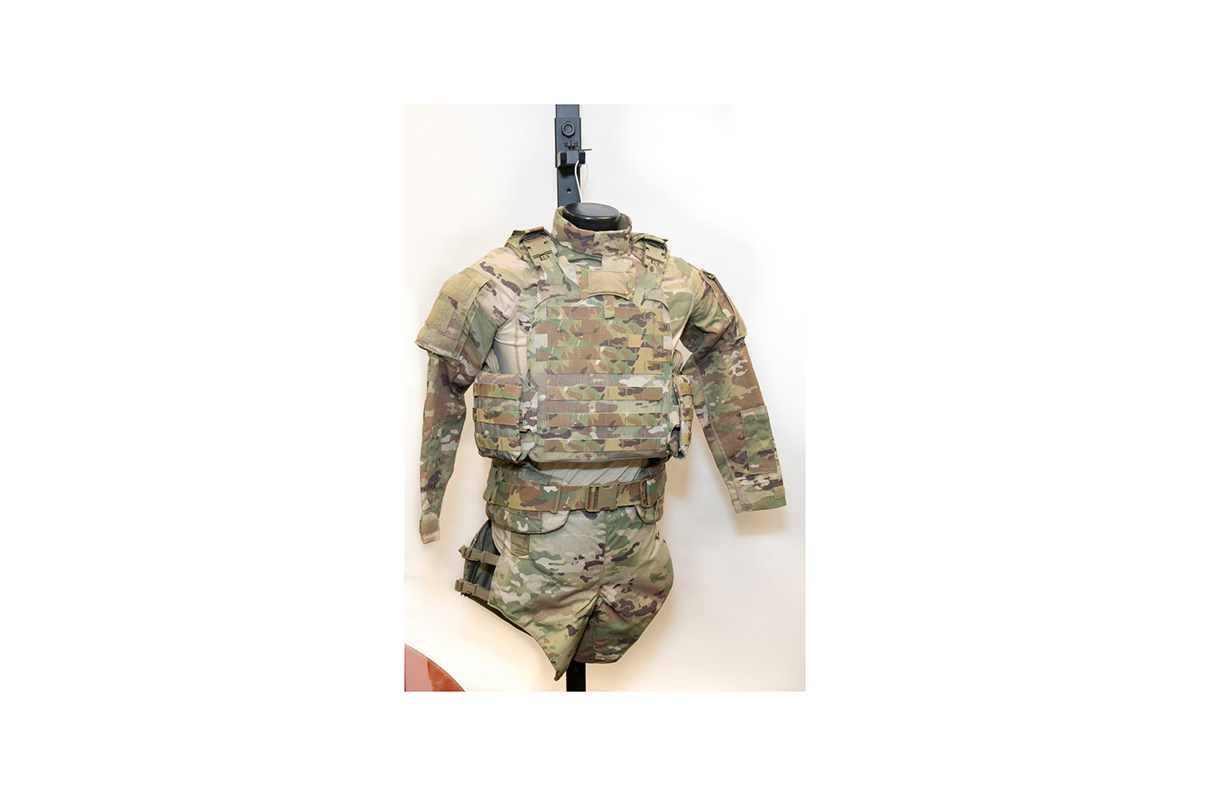A defense manufacturer, a high-strength-fiber maker, university researchers, and a U.S. Air Force Academy cadet have come up with several new approaches to developing body armor for troops in harm's way.
Liquid armor
BAE Systems and Helios Global Technologies are developing liquid armor technology. BAE says in tests, its bulletproof "custard" has been able to stop projectiles more effectively. The technology is such that the liquid hardens when struck. BAE notes if combined with Kevlar, the paired materials could have wide applications.
Anne Healey, BAE Systems general manager-Canada, says liquid armor could offer troops increased protection and yet be lighter, allowing for greater maneuverability. Liquid armor is a material that has reduced mass but gives increased protection, has a wider area of coverage, and easily can integrate with other systems, she notes.
Foam
Afsaneh Rabiei, who has a doctorate in mechanics and materials and is a professor in Mechanical and Aerospace Engineering at North Carolina State University, is head of a team that created a composite metal foam that might be used by the military to produce super-light body armor for personnel. Rabiei's team developed a foam body armor that defeated a 7.62-mm armor piercing bullet, turning it into powder on impact. The strike face was made of the composite metal foam, along with boron carbide ceramics, while the back plates were Kevlar.
The research team found the armor piercing round penetrated less than an inch on the weapon side, while on the soldier's side, it created an 8-mm indentation on the back plate.
Human hair
The Air Force Office of Science Research funded a study at the University of California, San Diego that examined the strength-to-weight ratio of human hair compared to steel. Researchers found hair had strength like steel but also could stretch 1 1/2 times its length before it snapped. They also determined when hair is stretched more quickly, it becomes stronger.
Researchers found high temperatures, over 140 degrees Fahrenheit, make human hair more breakable, while humid weather makes it more stretchable. They note understanding the properties and structure of hair will allow the development of new materials, including body armor.
Goo
Air Force cadet Hayley Weir thought about combining antiballistic fabric with a goo-like shear thickening fluid to create body armor material that is much more lightweight than current units. Weir worked with U.S. Air Force Academy professor Ryan Burke to test different ingredients in the shear thickening fluid and then layered it in with ballistic fibers, later testing it on the firing range.
Weir (now a second lieutenant) and Burke found their modified fibers stopped a .44 Magnum three times in testing. They anticipate body armor made from the shear thickened material could reduce a servicemember's average 26-pound body armor by two thirds.
Lightweight ballistic fabric
A new lightweight ballistic fabric, Twaron ComForte SB3, made by Teijin Aramid is gaining attention. It's based on a Twaron ultra-micro yarn the company says is effective against high-energy semi-jacketed projectiles, such as .357 MAG JSP and .44 MAG SJHP.
The company says Twaron ComForte SB3 combines body armor flexibility with the ballistic efficiency of a unidirectional laminate, allowing more ballistic protection with more flexibility, comfort, and mobility for the wearer. It allows body armor to be better shaped to the body's curves, the company says, making it more comfortable to wear.
